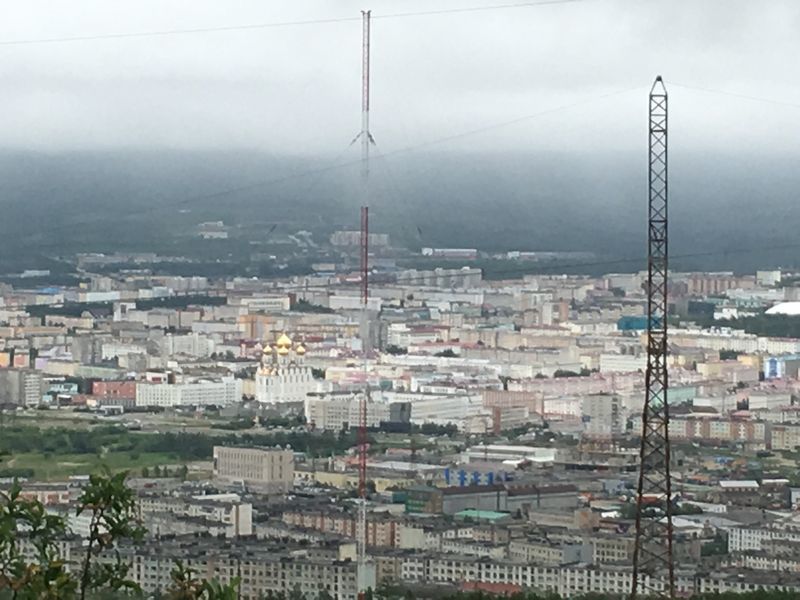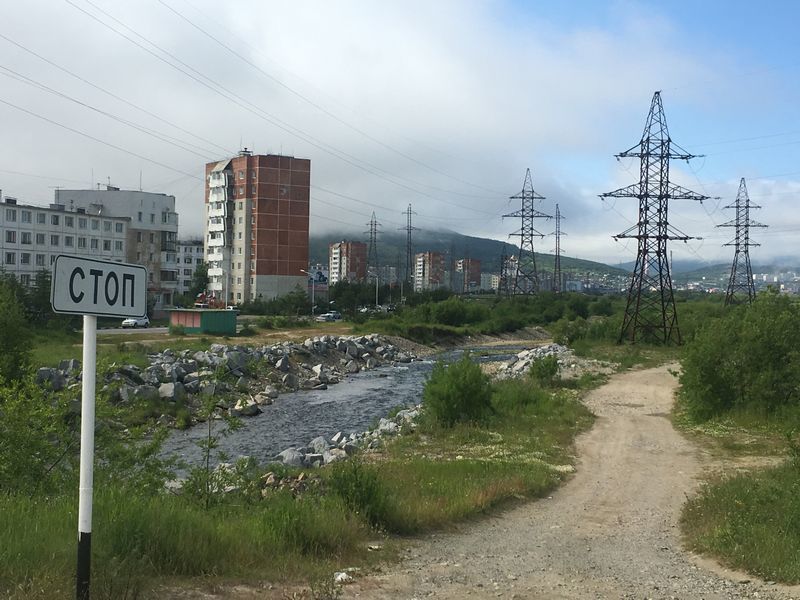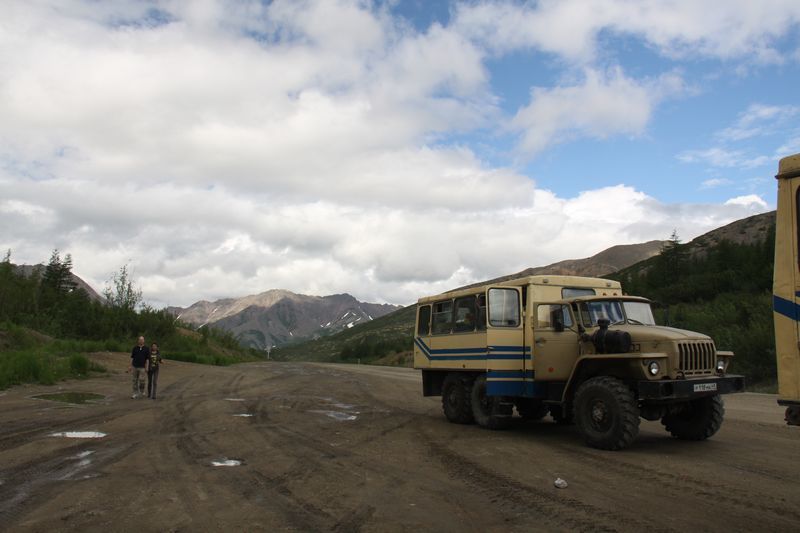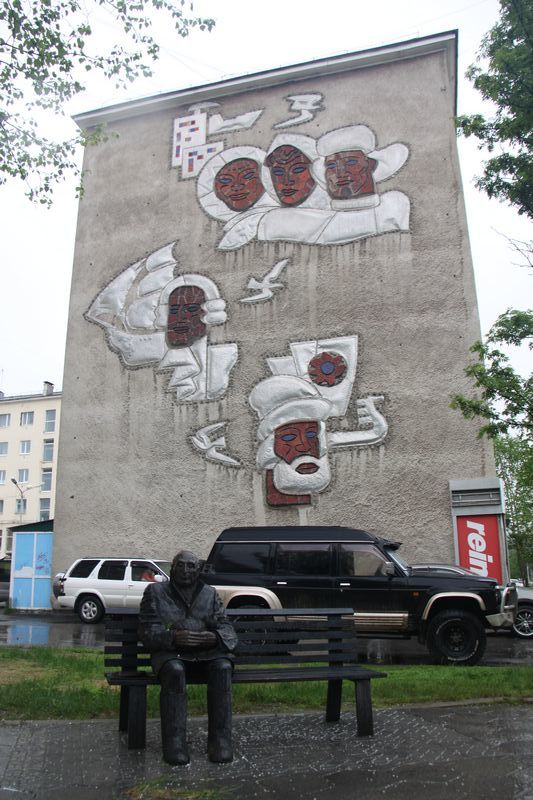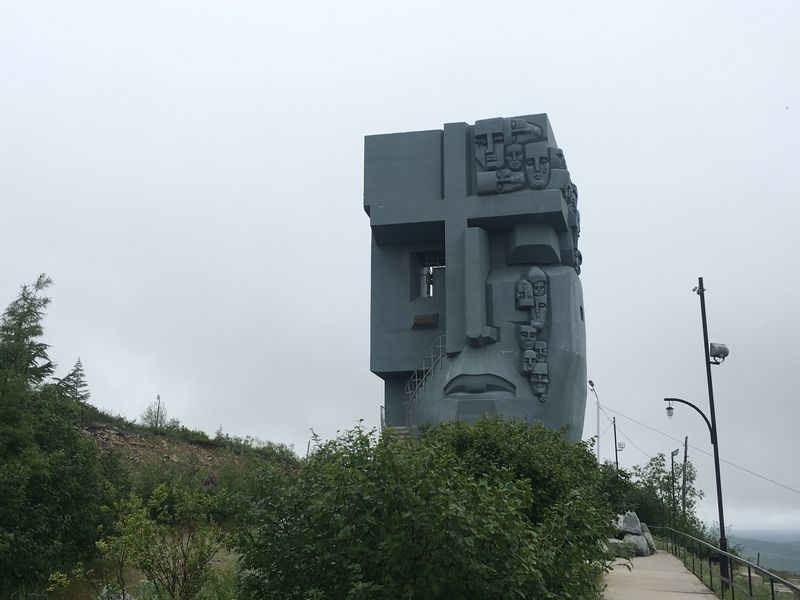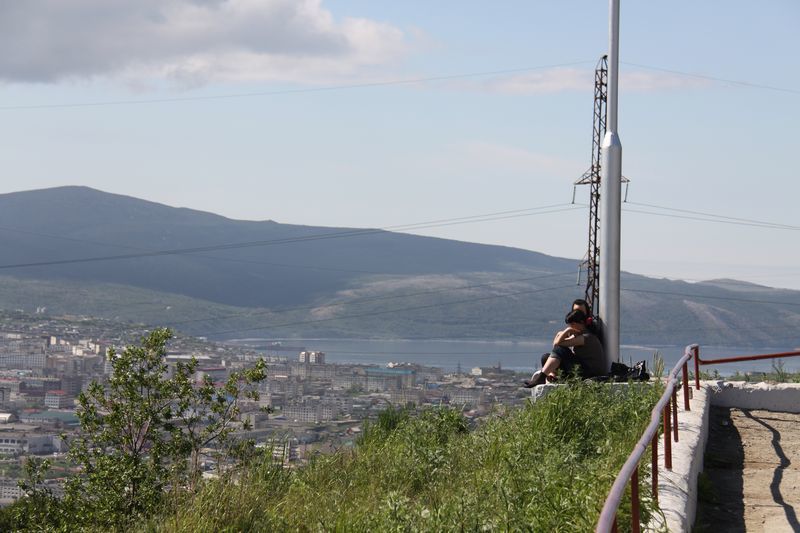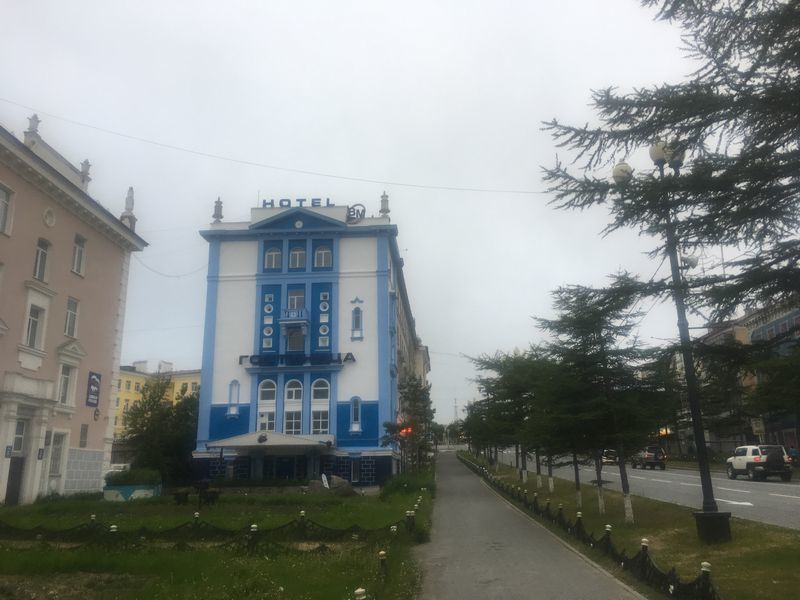Magadan | Russia Travel Guide
Magadan
Introduction
History
Visiting
Weather
Transport
Sights
Hotels
Introduction
Magadan, the name itself is sufficient to raise in the mind of anyone of a certain generation or who has read any soviet history a feeling of dread and despair. A place synonymous with some of the worst atrocities committed by man upon man in human history, and a place of deep darkness, the majority of whose visitors were taken there involuntarily.
However Magadan is also home to tens of thousands of people, many of whom love it there now; it is scenic, wild, inhospitable and tough - but for tough people this is something to be enjoyed as much as endured and the hills, tundra, waters, abundant wildlife from foxes to bears, fish to fowl, make it deeply attractive to nature lovers as well as those who prefer to live at the edge of the world and far from the central authority.
It is a confusing and ambiguous place at the very least, but for curious visitors and those who are drawn to such cities, there are few other places quite as amazing and evocative as Magadan!
History
Founded in 1930 Magadan city is the capital of Magadan Oblast. Initially Magadan was created as the administrative centre of the Dalstroy organisation (basically the Kolyma Gulag administration, a kind of state company/agency that ran the network of forced labour camps that Magadan is notorious for hosting) and as the transit centre for the prisoners being processed through this area and into the camp system deeper inland in the territory. A truly fearsome place that lived in the nightmares of people across the country.
Magadan region is rich in metals of many kinds but it remote and a very tough area, home to both an indigenous population and also Russian frontiersmen the population swelled massively as the Great Terror filled the camps, guards and administration also had to be shipped in and urban infrastructure sprang up to deal with the demands of such a vast and complex (and cruel) system.
Famously Magadan hosted a visit in 1944 by US Vice-President Henry Wallace, there to check on reports of a brutal prison system and also to discuss lend-lease arrangements for the joint war effort. Wallace seemed to ignore the smell of wet paint and choreographed happy prisoners around him and was sucked in by the propaganda machine, praising the work being done in Magadan. This was later used against him and largely prevented him securing the Presidential nomination later that year, losing to eventual President Harry Truman.
Despite suffering a declining population in the years since the end of the Soviet Union, and all the attendant social and economic ills from the early days of that period, Magadan has maintained itself as a viable settlement, largely down to the continued extraction of valuable elements in the province, and is a far from unpleasant place by regional Russian standards. While many other settlements have decayed and been left to nature the capital has kept itself alive and various industries have sustained themselves even outside of mining; fishing and hunting, processing foods, etc all go on here and keep people employed.
People living in Magadan are often proud of themselves for being able to forge a life in this difficult area, and can be very hospitable as well as being simply very tough as well.
This is not a town for wimps really and the locals know that it is through their efforts that the city of Magadan will remain or decay like many other places in the area – less than a century after its foundation Magadan remains heavy with the memory of those darkest of days and is certainly not without its problems in the modern era, but there are reasons for people who live here to have some optimism, and a gradually increasing tourism industry would be helpful for this no doubt.
Visiting
Magadan is not too large to walk around, the outskirts are mostly the as-expected soviet apartment blocks and some dacha areas, some stray dogs and foxes wander these areas so do be aware of where you are.
Centrally the hardest thing about getting around Magadan is that it is a bit hilly, but wander around the central park, see some older buildings, stop at coffee shops and restaurants (there is a good Steakhouse – called ‘Steakhouse’, plus a branch of the very good Russian chain Toro Grill, as well as a range of Russian foods, Korean restaurant, and so on. Lots of options here).
Magadan is not considered particularly dangerous but as with any Russian city do be aware that some people like to pass the time but having a cheeky vodka or two and that can lead to certain behaviour that you would be best to stay away from! Locals here (as in many remote places) attend to be approachable and accommodating though and don’t see all that many foreigners, however, there is a university, education levels are high, some people speak English and it isn’t as much of a backwater as it once was.
So, do the town on foot and you will gain a lot from the experience, as well as raising your ever-so-crucial step count! There are a couple of souvenir shops to be found, one just a little downhill from the VM-Tsentr Hotel is very good, also various gold shops around town selling competitively priced jewellery made from Magadan gold (mined by machine, not prison labour!). For everyday goods and also a fun experience head for the Chinatown (Kitai Gorod) Market. Most stallholders here are from China, as is most of the stuff they sell. If you want to go full local and dress in tracksuits and camouflage gear all the time then this is the place to stock up!
Weather
What is the weather like in Magadan?
As you might imagine it is cold much of the time, real cold, the kind you see in YouTube videos of people throwing boiling water in the air and it becoming ice crystals as soon as it hits the air.
There are 6 months of below-zero temperatures on average, combined at that time with nearly total darkness during a certain period. The ground is permafrost and it is generally a dark and cold place. Welcome to Russia!
In summer things get better and the town manages even to avoid the plagues of mosquitoes that ravage much of the country in the hotter season. There is even a local beach that locals head for on sunny days (although the water remains absurdly cold throughout, people bathe in the sun rather than the water!)
Transport
How to get to and travel around Magadan
Flight
Magadan is connected to the rest of Russia only by air (apart from the Road of Bones, see below). Sokol Airport is around an hour from the city and is a pretty retro soviet era place mainly. Flights arrive and depart here from/to mainly places that you may not have heard of (Keperveyem, Pevek, anyone?) but also to more major cities such as Irkutsk, Moscow, Vladivostok, Yakutsk). There was once a flight between Alaska and Magadan but sadly that is no more and all flights are domestic Russian ones now
Road
The Kolyma Highway/Road of Bones runs between Magadan and Yakutsk, 2031km in total. It is a multi-day journey whatever kind of vehicle you have and whatever time of year you do it – most visitors to Magadan will travel at least some of the length of this road, even if just from the airpoprt to the city.
Sights
What to do in and around Magadan
Magadan History Museum
A great introduction to the city and the whole region, a place every visitor should make a point of visiting.
Exhibitions on the flora and fauna of Magadan are interesting and give an idea of the bio-diversity of this area (often assumed to be just made up of snow, ice, and nothing more) but the real reason most foreign visitors will find themselves here will be for the gulag exhibition.
This is very tastefully done and is very educational. A great collection of artifacts recovered from the various sites in the area are on show here, plus displays that don’t sugar-coat the appalling experience of finding yourself in one of these institutions.
The museum has also struck a good balance between the relentless horror and the somewhat more ambiguous views many people hold of Dalstroy (the operator of the gulag system in Magadan)and its founder and director Eduard Berzin, a man credited with creating the town that many people actually love to live in. This can be confusing indeed given the horrific system built by Berzin, but come to this museum for some more information on how his legacy is seen these days. (to be fair, just because Berzin was less brutal than some of his successors doesn’t say much; he wore a fur coat and drive a Rolls Royce while thousands died in his camps. His execution in 1938 isn’t the greatest tragedy of the era)
This museum is an absolute must-visit even for anyone who knows very little about the dark past of Magadan. It is small and takes just a couple of hours to go around. Photos are permitted for a small fee, don’t skip this part even if you aren’t a lover of museums.
Vadim Kozin Home/Museum and Statue
Kozin was a Russian tenor singer as well as songwriter known throughout the country, he sang Russian songs as well as Gypsy choir songs (his mother was a Romani) and performed for Red Army troops during World War II. His fame and talent couldn’t protect him from the darker side of Soviet power however and after an ill-advised answer to a question from Beria as to why he didn’t sing about Stalin more (Kozin told him that songs about Stalin didn’t work for tenor voices) he was packed off to Magadan in 1944.
Kozin was a prisoner until 1950 but even after this he had to remain in the Kolyma area and performed for camp inmates and guards, touring possibly the most depressing routes available to a singer.
Shalamov wrote that Kozin attempted suicide after his very first performance and he clearly never became at peace with being sent to Magadan, leading to him rejecting singing, burning his own records, and (understandably) being very bitter after being whisked to the Yalta conference to perform for Churchill (a fan) and then right back into the gulag again immediately afterwards.
Kozin was never officially rehabilitated and died in 1994 at 91 years of age. His flat in Magadan, in one of the normal apartment buildings, is now a museum. It is a fascinating place to visit and get a sense of how people lived in what was basically internal exile at that time. His small bedroom and living room still contain all the things they had when he lived there, a picture of Bobby Fischer speaks to Kozin’s ongoing dislike of the USSR (a true soviet would have supported Spassky!) and it is a deeply sad place indeed.
Adjoining rooms have been turned into a small museum and a bright red piano sits here and is used for concerts of Kozin’s songs, something that can be arranged by local travel companies.
Outside the building is a tasteful and thoughtful monument to the man himself. A metal bench with a statue of the diminutive Kozin sat with his pet cat, looking deeply sad.
Mask of Sorrow
The horrors of the Soviet gulag system have had many millions of word written about hem over the years, but the depth, duration, and intensity of the experience is hard to render in a single monument, here though is as close to a success as is possible.
A giant human face, rendered of other faces on a hillside overlooking the city. The definition work of designer Ernst Neivestny, a Red Army veteran who emigrated to the US but kept close connections to Russia, despite being denounced as a “degenerate” by Khrushchev) this monument to the millions of victims of both the Great Terror and the general gulag system is tasteful and fascinating. Sadly the area around the monument is a bit basic and run down, stray dogs roaming the area either add or detract from the feelings brought into the visitor but a visit here is essential for any trip to Magadan.
A small park leads up to the main monument featuring stones engraved with the names of the main camps in the Kolyma region, as well as the logos of all the major religions (all of whom were represented in the system).
The main monument, the mask itself, has steps that lead into it, a book of remembrance is there as well as books listing the names of all (actually a work in progress) of those who passed into the gulag system.
It is an exceptionally well-done memorial and a fitting tribute to those who suffered so much and whose visit to Magadan was very much involuntary.
Mammoth and Deer Statues
Cleverly designed and built models of animals native (well, one of them once-native) to this area. The Mammoth sits at the shore of Nagayeva Bay and is made of found metals and rusted junk. The Monument of Deer (emblems of the city) sits at the entrance to the city if coming along the Kolyma Highway from Sokol Airport. A typical photo of anyone visiting Magadan involves them sitting on the deer, go ahead, they are well-built and won’t break under you!).
Monument to Explorers
A well-laid-out small complex based around a statue of a Russian geologist and a local indigenous guide working together while riding a reindeer sits here on the south side of town.
It is somewhat typical of Soviet-era monuments to new explorations to remember to include the efforts of the local pre-Russian population, without whom getting across and around this kind of land would have been impossible. For all the justified praising of the Russian explorers in braving such conditions it is always worth remembering that indigenous people lived and thrived here already, as they still do
Cathedral of the Holy Trinity
Originally the main square in Magadan city was the site of a large and robust looking Lenin Statue. This has since been moved (see below) and in 2012 the Cathedral of the Holy Trinity was completed after several years of construction.
This powerful Orthodox place of worship is picturesque and in frequent use. The bells are run on a schedule and it is worth turning up to see and hear this being done.
A metal bust of a church elder can also be found here, all a sign of the recent trend of religion gaining ground on the previously secular society in Russia, here as across the nation. It is possible and permitted to go inside the cathedral, in which case conservative dress is needed, women must cover their heads, nobody should wear shorts etc. If visiting for a service note that there are no seats, no music, and services are delivered in a complex form of Russian; Orthodox services are meant to be endured rather than enjoyed, so if you just want a look then go when there is not a service taking place!
Lenin Statue
Once-dominant in the central square the last years have seen this impressive statue of Vladimir Ilyich moved up the hill to a small square next to a fairly normal-looking building (pro tip: it is the local FSB HQ, be careful when taking photos of it!).
Lenin here is presented looking like a serious man meaning serious business, however often this is undermined by having pigeons and seagulls (the latter of which prey on the former, leading to a ground often strewn with bird corpses) sitting on his head and doing their business on him.
Nagayev Bay
The place where Stalin’s slave ships of gulag inmates docked when delivering their human cargo to the area. A very scenic area with Magadan city sitting at its head, the waters of the bay run right up to the town and there are some crumbling viewpoints around the area that are worth visiting, as well as a new hipster coffee joint next to a statue of Vladimir Vysotsky, a Russian singer and actor of immense fame in the 60s and 70s who (among other things) is known for his song My Friend went to Magadan
The other main song about Magadan is Magadan by Mikhail Krug, a shanson artist who sang largely about organised crime and prison life, and who was murdered by a man who was then murdered himself. Thug life!
Hotels
Lacking major chain hotels is no barrier to staying in Magadan, at the start or finish of a trip on the Road of Bones you will find yourself here. There are a number of options but the best would be;
Hotel VM-Tsentr: our favourite spot is this 3-storey older building, on the final km of the Kolyma Highway. Tiny elevators, somewhat retro but clean rooms, souvenir shop, decent breakfast, easy to find and fitting in with the general vibe of the town. Has a pleasant small bar too
Hotel Okean: near the bay and a little more remote than the VM-Tsentr this place can be livelier due to it popular bar/club in the building.
Golden House Hotel: newest and best hotel in Magadan, this place aims high and is easily the most comfortable and well-appointed in terms of rooms. The location is a tiny bit further out fo the action than you may want. Doesn’t exactly scream ‘Magadan’ from the inside but for anyone wanting a little pampering and comfort this would be a good option
Interested in a tour to Russia?
Travel to Russia with the
Russia travel experts, Koryo Tours
Russia Tours | Sign up to the mailing list | About Koryo Tours

